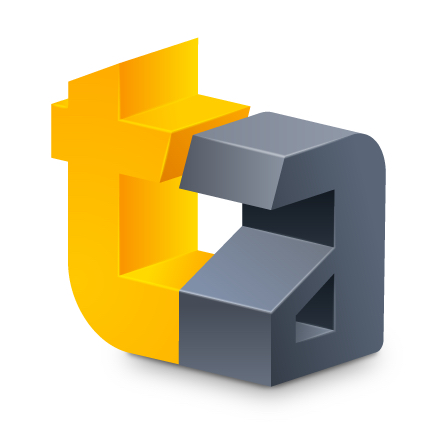 Hello, gentle readers, and welcome to the RPG Reload. This week, we’re continuing our little monthly project looking at the history of handheld RPGs. That means that we will not be taking a look at a specific RPG from the App Store’s past this time around. Last month, we looked at the early years of smartphone RPGs, when paid games ruled the roost. For the first time since perhaps the early years of the Game Boy, JRPGs and WRPGs were arriving on a handheld in nearly equal numbers. Dedicated handheld systems weren’t finished yet by any means, however, and both Nintendo and Sony would introduce successors to their handhelds just as the smartphone market started to pivot. This month, we’re looking at Nintendo’s offering, a system that had some pretty big shoes to fill in the wake of the Nintendo DS’s unprecedented success.
Hello, gentle readers, and welcome to the RPG Reload. This week, we’re continuing our little monthly project looking at the history of handheld RPGs. That means that we will not be taking a look at a specific RPG from the App Store’s past this time around. Last month, we looked at the early years of smartphone RPGs, when paid games ruled the roost. For the first time since perhaps the early years of the Game Boy, JRPGs and WRPGs were arriving on a handheld in nearly equal numbers. Dedicated handheld systems weren’t finished yet by any means, however, and both Nintendo and Sony would introduce successors to their handhelds just as the smartphone market started to pivot. This month, we’re looking at Nintendo’s offering, a system that had some pretty big shoes to fill in the wake of the Nintendo DS’s unprecedented success.
In total, this feature will span twelve columns, each one taking a look at a specific era in handheld RPGs. I hope you enjoy reading them as much as I’ve enjoyed researching and writing them! Please let me know what you think by commenting below, posting in the Official RPG Reload Club thread, or by tweeting me at @RPGReload. If you like this project and wish to support endeavors like it, please consider contributing to the TouchArcade Patreon. Support has dipped a little recently, and I can’t stress enough that it’s the only thing that makes these kinds of big features possible.
It should go without saying that tabletop, computer, console, handheld, and mobile games are all inextricably tied with each other in various ways. To consider how other platforms contributed to handheld RPGs in these articles would grow them well beyond the scope I’m able to deal with. I’ll be mentioning some influences here and there, but this is basically a disclaimer that I’m aware handheld RPGs don’t exist in a vacuum, in spite of the relatively narrow historical focus of these articles.
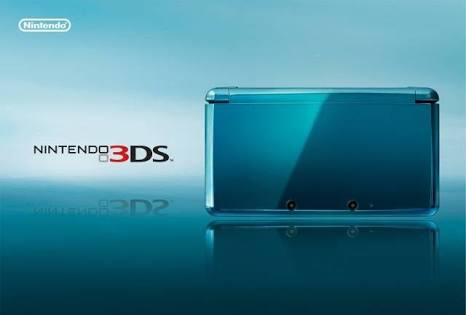
The History Of Handheld RPGs, Part Ten – RPG In 3D
In 2010, Nintendo was coming off a roll like no other video game company had in some time. The Nintendo DS had smashed all expectations and become the company’s most successful product of all time, and while the Nintendo Wii seemed to be running out of gas, it had also performed well beyond anyone’s predictions. Nintendo had the golden touch, it seemed, with their combination of popular homegrown brands, relatively low retail pricing, and attention-grabbing features. The problem with that particular formula for success is that it only works if you can keep catching the eyes of the masses with some kind of innovation, something that becomes more difficult each time. With that said, there was little reason to doubt that Nintendo would continue to dominate the handheld space with the Nintendo DS’s follow-up.
The Nintendo 3DS was announced in March of 2010, likely to keep the shareholders happy after a somewhat tepid year. The Nintendo DS had been on the market for several years and the bottom had more or less dropped out of software sales on the platform, and the Wii was having trouble holding on against the more future-proof competition. There were a lot of whispers that Apple and their mobile platform had scooped away a lot of Nintendo’s newly-acquired audience, but it was just as easy to blame slowing sales on the respective age of each platform and their underlying technology. Regardless of the why, Nintendo needed some new hardware on the market, and since the Nintendo DS was the older of the pair, it seemed it would get its successor first.
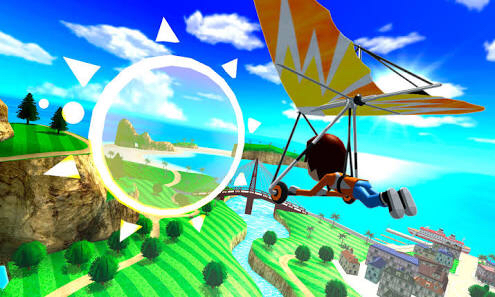
Imagining opposites is easy enough when concepts are simple. Big is the opposite of small. Cold is the opposite of hot. It gets harder when things get more complicated. What is the opposite of a rainy Sunday morning? Is it a dry Wednesday night? I don’t know, but in spite of the complexity of something as vague as public response to a new piece of gaming hardware, it’s pretty easy to make an example. The response to Nintendo’s unveiling of the Nintendo 3DS at E3 2010 was, for all intents and purposes, the exact opposite of the one to the original Nintendo DS at E3 2004. Instead of indifference, there was elation. Instead of fear for Nintendo’s future, there was boundless hope. Instead of complaints about an anemic software line-up, there were cheers for both the diversity and quantity of the announced games for the platform. Plus, it seemed like Nintendo had finally hit on a gimmick that people could immediately understand and appreciate. 3D movies were tearing up cinemas around the world at the time, so having glassless 3D on a handheld seemed like a smart decision and a good selling point.
In fact, the response to the Nintendo 3DS at that show was so overwhelmingly positive, it helped convince Nintendo to set the price of the machine at $249.99, easily the highest price tag a Nintendo handheld had ever carried. While many flinched at that price, the feeling about the 3DS remained extremely optimistic on the whole. At the same September conference where Nintendo announced the price of the system, they also announced its release date in Japan. The system would launch on February 26th, 2011. Later, Nintendo announced that the 3DS would launch in North America and Europe one month after the Japanese launch, on March 25th, 2011. The initial software line-up looked a little sparse, but that was hardly out of the ordinary for a handheld launch. The eShop, the 3DS’s store for digital games, wouldn’t be present for the launch, instead following a few months later in June. A few hiccups, to be sure, but surely nothing Nintendo couldn’t overcome.
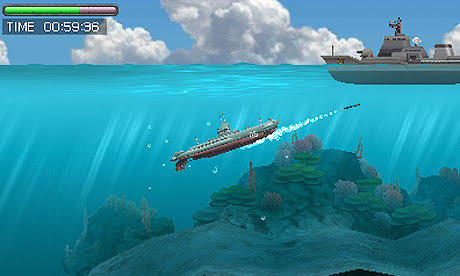
The system launched in Japan on February 26th, and almost immediately sold out of its initial shipment of 400,000 units. Two weeks later, as everyone was gearing up for the impending launches worldwide, a 9.0 magnitude earthquake hit northeast of Japan, sending massive tidal waves towards the east coast and triggering a major nuclear meltdown. Understandably, sales of the 3DS cooled almost immediately after launch as a result. The launches in the other two major regions weren’t affected by the disaster, however, and both seemed to go as well initially as the Japanese launch had. By the end of March, Nintendo had sold more than 3 million Nintendo 3DS units worldwide. An excellent start by any measure, and you’d be forgiven if you had thought Nintendo had pulled it off yet again. Unfortunately, once the launch fever wore off, the hangover was vicious.
In the next three months, the Nintendo 3DS would barely sell more than 700,000 units worldwide. It was too expensive, the battery life wasn’t great, and perhaps most importantly of all, there just wasn’t enough good software available. Even Nintendo had provided fairly meager offerings for the launch period. Nintendogs + Cats had casual appeal but didn’t have the appearance of being significantly better than the previous game in the series. Pilotwings Resort was extremely light on content. Steel Diver looked like a game that could have easily been done on much older hardware. Even the higher quality third-party offerings were, for the most part, giving players experiences they could already enjoy elsewhere. Adding a 3D effect simply wasn’t enough to get people excited. One launch highlight I will mention, however, is Tom Clancy’s Ghost Recon: Shadow Wars, from Ubisoft. Designed by famed X-COM creator Julian Gollop, if you wanted a game with some RPG meat on its bones in the first couple months of the 3DS’s life, this was pretty much your only choice.
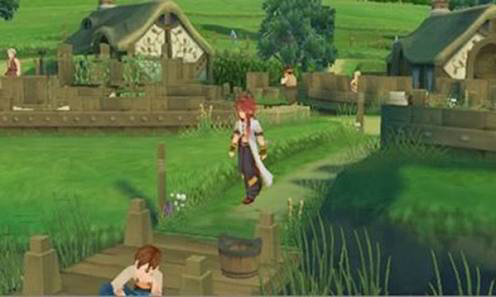
The rest of the world would have to wait a while for a more traditional RPG on the 3DS, but Japan got its first release in June, and as with the Game Boy Advance, it was a port from a home console. In this case, it was Namco’s Tales Of The Abyss, previously released on the PlayStation 2. This was most likely Namco testing the waters to see if the 3DS would make a good home for future Tales games, and judging by the number of Tales games that came after, I suspect it didn’t sell very well. Nevertheless, it was a pretty good port, and it even got released outside of Japan, albeit months later. The game released in Europe in November of 2011 and was the first retail RPG released in that region, and eventually made it to North America in February of 2012. That might seem like an odd pattern, but the 3DS had been struggling in North America worse than the other two regions, so quite a few games were held back by third parties until the situation improved. At least Atlus seemed willing to take a minor risk, releasing an enhanced port of their DS strategy RPG Shin Megami Tensei: Devil Survivor in both Japan and North America in the late summer.
Fortunately, Nintendo took the dropping interest seriously. On July 28th, 2011, they made an announcement that the 3DS’s retail price would be dropping by a significant amount in all regions. By way of apology for the extra $80-100 early adopters paid, Nintendo offered a special selection of classic games, including 10 NES titles and 10 Game Boy Advance games. While the NES games would eventually be released for normal purchase on the eShop Virtual Console, the GBA games have so far remained exclusive to those who bought their 3DS in the first few months. There were a couple of RPGs among these 20 games, most surprisingly Fire Emblem: The Sacred Stones. Up until this point, it had seemed like Nintendo had lost their taste for releasing Fire Emblem in the West, but things were about to change in a big way on that front.
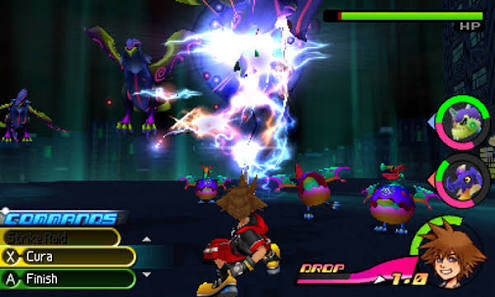
The price drop, when combined with some slightly rushed software such as Mario Kart 7, was able to turn the ship around, and the 3DS finally managed to get some wind in its sales wings. As a result, its second year looked a lot stronger in terms of releases, particularly for RPG fans in Japan. The system closed out 2011 in its home country with the release of Capcom’s Monster Hunter 3 Ultimate. Securing the handheld exclusive on this franchise more or less sealed the fate of their competitor, but we’ll talk about that next time. The 2012 charge in Japan was led by Square Enix with the March release of Kingdom Hearts 3D: Dream Drop Distance. An original game created by the team behind the PSP Kingdom Hearts: Birth By Sleep, Dream Drop Distance serves as a bridge to the still-unreleased Kingdom Hearts 3. It released in North America in the summer of 2012, and was the first major original RPG on the system in that region. The game seems to have sold under expectations worldwide, however, and wasn’t terribly well-received by players.
A borderline RPG case proved to be much more successful for Square Enix in 2012. Theatrhythm Final Fantasy was a rhythm game with RPG elements that celebrated the fantastic music of the beloved series. While it didn’t sell amazing numbers, it did quite well for what it was, and it even managed to see release on iOS. A follow-up titled Theathrythm Final Fantasy: Curtain Call dropped in 2014 worldwide, and a third game, Theatrhythm Dragon Quest released exclusively in Japan in 2015. Sadly, the 3DS has a pretty bad track record for Dragon Quest games getting released in English, and the region-lock on the hardware means that in spite of its rather low language barrier, Theatrhythm Dragon Quest is still pretty difficult to play for the average 3DS owner.
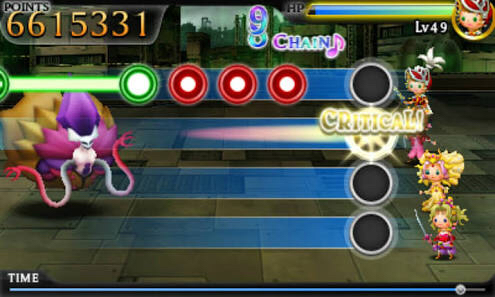
Speaking of Dragon Quest, Square Enix had another heavy hitter for the year, at least in Japan. Dragon Quest Monsters: Terry’s Wonderland 3D was a full remake of the original Dragon Quest Monsters on Game Boy. It released in the summer and sold well enough that Square Enix continued the line, releasing a remake of Dragon Quest Monsters 2 in 2014 and a third title in the Dragon Quest Monsters Joker series in 2016. Sadly, none of these games released outside of Japan, and as of this writing, it seems incredibly unlikely that they ever will. I think this was a miss on Square’s part, as it took a long while for a proper Pokemon game to arrive on the 3DS. This is, unfortunately, not the only example of the RPG giant being gun shy on 3DS localizations.
Square Enix began to get cold feet about the dedicated handheld market after a couple of early failures on both new systems. They were particularly nervous about international releases, and seem to still be suffering from that apprehension as of this writing. Even with that, they still managed to release one of the Nintendo 3DS’s best RPGs. Bravely Default, developed by Silicon Studios, looks and sometimes feels like a follow-up to the Nintendo DS’s Final Fantasy: 4 Heroes Of Light, but it’s a far better game all-around. Like The World Ends With You did for the DS, Bravely Default incorporates many of the 3DS’s special features to create a game that feels right at home on the platform. It appears that Square didn’t have a lot of confidence in the project, as it reeks of having to stretch meager funds thinly at times, but it still turned out to be one of the essential RPGs on the system. We almost didn’t see it outside of Japan. Nintendo themselves had to step in and publish it, or rather its “international version", known in Japan as Bravely Default: For The Sequel. The original Bravely Default released in late 2012 in Japan, but Europeans would have to wait until December 2013 and North Americans February 2014 before they could join in the fun.
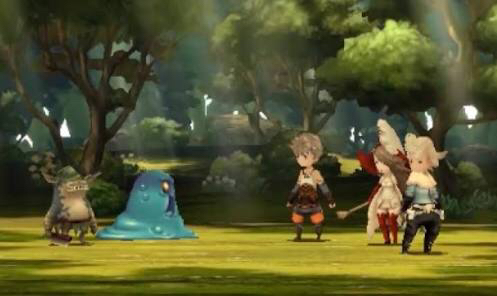
Other third parties trickled out some 2012 releases in Japan, as well. Atlus released Etrian Odyssey 4, the latest in their DS dungeon-crawling series. It’s a fairly safe sequel in most ways, but it uses the extra oomph of the 3DS to create more beautiful, crisp visuals. This is also the installment where the series switched from the faux-FM synth soundtrack that characterized the previous games. In addition to Etrian Odyssey 4, Atlus also released a port of their classic SEGA Saturn dungeon crawler, Devil Summoner: Soul Hackers. A spin-off of the Shin Megami Tensei series, Soul Hackers oozes 90s cyberpunk style from all of its pores. It was previously ported to the PlayStation 1, but neither the Saturn version nor the PS1 version had been released in English. Soul Hackers would finally get its shot worldwide in 2013, along with Etrian Odyssey 4.
Agatsuma published Code Of Princess, a side-scrolling action RPG with gorgeous visuals. Late in the year, Namco, in cooperation with SEGA and Capcom, put together the wild cross-over strategy RPG Project X Zone. If only the game were as good as the idea. English fans would have to wait until 2013 for both of these games, but it’s somewhat miraculous the latter made it at all, given the licenses involved and its somewhat dubious quality. It’s a good thing it did, because it sold quite well outside of Japan. Finally, Level 5 released a compilation of games called Guild01. The hook is that each game in the collection was authored by a different well-known Japanese designer. One of the games was Crimson Shroud, an interesting hybrid of RPG mechanics and gamebook features. It was designed by Yasumi Matsuno of Tactics Ogre and Final Fantasy 12 fame, and to date is the last game he ever personally oversaw. It released on the eShop worldwide late in 2012.
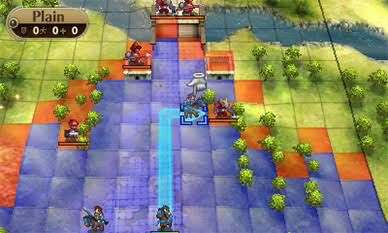
It was Nintendo who ended up capturing most of the RPG attention in 2012, at least in Japan. April saw the release of Fire Emblem: Awakening, which was designed as a final hurrah for the struggling series. The designers threw in everything and the kitchen sink, since they were quite certain it would be the last. The game was a huge hit in Japan, and I suspect it was the sales there that convinced Nintendo to take a chance on it in the rest of the world in 2013. It’s a good thing they did, as Awakening was far and away the most successful of the series outside of its home country. In addition to the familiar tactical combat that fans had come to know and love, the game also included more overt dating mechanics and a lot of difficulty options, both of which were likely instrumental in its success. This is also the first example of a Nintendo 3DS game with paid DLC, and it’s got quite a bit of it. I’ll leave it up to the reader to decide if that’s good or bad.
Another 2012 Japanese release that slipped into 2013 elsewhere was the latest in the Pokemon Mystery Dungeon series, titled Gates To Infinity. It was a solid enough performer sales-wise, as kids had few other interesting Pokemon games to play on the hardware. It was a pretty weak installment compared to the earlier titles in the series, however. Sadly, that same fate would befall another Nintendo RPG release in 2012, and this one actually came out everywhere that year. Paper Mario: Sticker Star is an interesting game with a lot of good ideas, and I personally really enjoyed it. At the same time, it’s nowhere near what anyone was expecting, and is far enough from the earlier titles in terms of mechanics and progression that I can’t really argue if people want to kick it out of the RPG club.
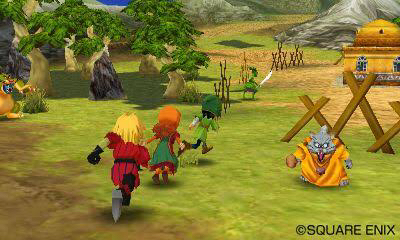
The following year was better for every region in terms of RPG releases. In addition to localized versions of games I’ve already mentioned, a ton of fantastic RPGs released worldwide. The year started off with a bang thanks to Square Enix’s gorgeous remake of Dragon Quest 7. For a long while, it looked like this was never going to release outside of Japan, but Nintendo recently committed to bringing both Dragon Quest 7 and Dragon Quest 8‘s 3DS versions to the West. They were announced as 2016 releases, but at this point, I’d be surprised if we got both before it’s time to change the calendars. It’s pretty weird how Nintendo seems to have more confidence in the Dragon Quest series than Square Enix themselves seems to at times, but it is what it is.
Atlus in particular was on fire in 2013. They not only localized Etrian Odyssey 4, but also released and localized the next game in the series, a full remake of the first game titled Etrian Odyssey Untold: The Millennium Girl. On the Shin Megami Tensei front, Soul Hackers got its localization in April, but the bigger news was the release of Shin Megami Tensei 4 in both Japan and North America. Atlus had previously stopped short of granting a full number to Shin Megami Tensei: Strange Journey on the Nintendo DS, so giving this game the honor of being only the fourth numbered game in the series showed quite a bit of confidence. It deserves it, too. It’s an incredible RPG that any fans of the genre should consider a must-own on the system.

This was also the year that Yo-Kai Watch made its debut in Japan. A prettier, simpler take on Pokemon that swaps Japanese ghosts for monsters, it quickly became a juggernaut in its home country after the game’s launch in the summer of 2013. Yo-Kai Watch is probably as close as any series has come to displacing Pokemon in Japan, and although it has faded considerably in the last year or so, for a while, it looked like Pikachu’s reign was over. The Yo-Kai Watch series so far has two mainline games and three spin-offs to its name, with a third game in the main series coming to Japan this summer. Thus far, only the first game has been released internationally. Like other Level 5 games on Nintendo platforms, Nintendo published and marketed the game outside of Japan. That’s pretty weird, if you stop and think about it. So let’s not.
Speaking of Nintendo, they had some ammo in their cannons for 2013, as well. In addition to localizations of Fire Emblem and Pokemon Mystery Dungeon, they also had the summer release of Mario & Luigi: Dream Team, the latest in their long-running portable Mario RPG series. Of course, they saved the best for the holiday season, when the 3DS finally got its very own Pokemon game. Pokemon X and Pokemon Y gave the series a European flavor, updating the graphics considerably along the way. Given the technical struggles that the Pokemon games had suffered on the DS, it was good to see the series hitting the ground running on the 3DS. Most importantly for Nintendo, it moved a lot of 3DS units, particularly to younger kids. Just to underline that point, Nintendo released a special version of the 3DS that cut the 3D display and sold at a much friendlier price. The 2DS was capable of playing any 3DS software, and was a nice option if you didn’t care about 3D. Interestingly, the 2DS only recently saw release in Japan.
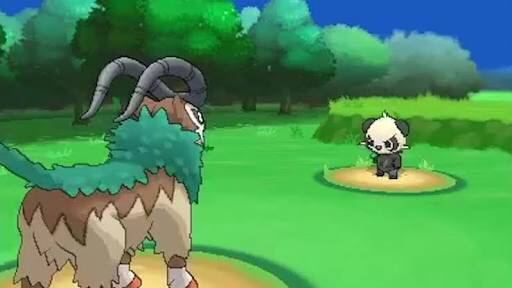
2013 also saw the worldwide release of Monster Hunter 3 Ultimate. With marketing support from Nintendo, the series finally started to catch on outside of Japan, though it wouldn’t really hit it big until the next installment, which added stand-alone online multiplayer to the handheld series for the first time. In addition to Virtual Console and eShop releases from a variety of publishers, 2013 also saw the release of Rune Factory 4 outside of Japan, courtesy of XSEED Games. In Japan, the sequel to a PSP RPG with a bizarre premise was released on both the Nintendo 3DS and PlayStation Vita. Conception 2 was one of the first examples of a cross-platform release across two systems that were very different in terms of power. This situation nicely highlights the fact that handheld RPGs were beginning to be limited not by the technical specs of the systems, but by the size of the market. XSEED would later release both versions outside of Japan.
The following year was considerably lighter for releases. Nintendo published Bravely Default in North America to kick the year off, but very few other RPGs of note were released until much later in the year. Atlus, of course, was there as always. Instead of a new Etrian Odyssey game, they had, well, an Etrian Odyssey game with a Persona skin. Persona Q: Shadow Of The Labyrinth released in the summer of 2014 in Japan, with a worldwide release in November 2014. It’s a really cool game, especially if you’re a fan of Persona 3 and Persona 4. It blends the styles of Persona and Etrian Odyssey quite nicely. Nintendo helped send 2014 off in good health with the release of Pokemon Alpha Sapphire and Pokemon Omega Ruby, remakes of the Game Boy Advance generation of games. They performed relatively softly compared to previous remakes, but there are lots of possible reasons for that. The originals weren’t the most popular to begin with, and most fans were fairly disappointed with the quality of the remakes. Still, selling badly by Pokemon standards still means these are among the best-selling titles on the system, so don’t cry too hard for Pikachu.
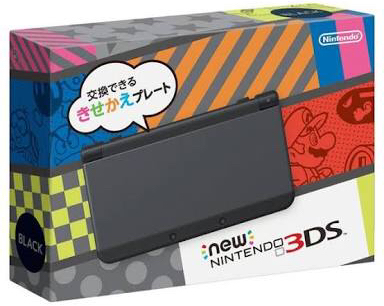
Sales of 3DS hardware were slowing down in 2014, so Nintendo did their usual thing and released a slightly upgraded model to try to spur sales. Dubbed the New Nintendo 3DS, it launched in October 2014 in Japan and early in 2015 in North America and Europe. Its improved specs gave developers a little more wiggle room, though as with the Nintendo DSi, very few games took full advantage of that extra power. One such game that is relevant to our interests is Xenoblade Chronicles 3D. A port of the Nintendo Wii cult hit, Xenoblade Chronicles released worldwide in early 2015. It’s not quite as impressive as the console version, but the very fact that it exists in a reasonably playable form is worth noting. It’s also a lot easier to come by than the somewhat rare North American Wii version. Xenoblade Chronicles is an easy addition to your library if you’re sporting a New 3DS.
Most games that use the New 3DS hardware still run on a regular 3DS, but use the extra power to make the game run smoother or with extra features. The later Monster Hunter games have shorter load times, less pop-in, and take full advantage of the extra buttons and stick on the New 3DS, for example. Then there’s the fact that only the New 3DS has access to the Super NES Virtual Console. For RPG fans, that means having access to the classic Earthbound, at the very least. Not wanting to deal with a split userbase, however, most publishers just carried on aiming their games at the lower spec. If you like RPGs, 2015 proved to be some kind of buffet. It was almost like being back in the Nintendo DS days in terms of breadth and curiosities.
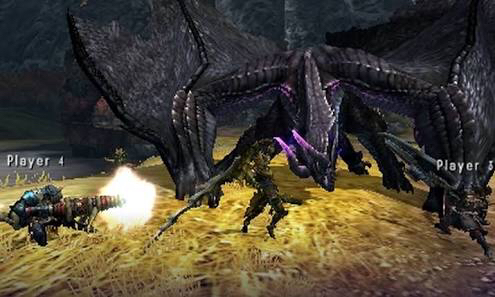
I’m not going to list them all, but some highlights of the 2015 line-up include Monster Hunter 4 Ultimate, Etrian Odyssey 2 Untold: The Fafnir Knight, Etrian Mystery Dungeon, The Legend Of Legacy, and Pokemon Super Mystery Dungeon. For strategy fans, there was Devil Survivor 2 Record Breaker, Code Name: S.T.E.A.M., Lord Of Magna: Maiden Heaven, Stella Glow, and on the eShop, SteamWorld Heist. Japan received a follow-up to Project X Zone and the next games in the Fire Emblem series, collectively known as Fire Emblem Fates. Japanese 3DS owners also received Bravely Second: End Layer, a sequel to Bravely Default, and a port of Dragon Quest 8. Project X Zone 2, Bravely Second, and Fire Emblem Fates would make their way overseas in early 2016, while Dragon Quest 8 appears to be heading for a late 2016/early 2017 release.
The eShop began to play host to more and more ports from mobile in 2015, and you know what that means. Our old friends Kemco brought over a handful of their, er, mobile classics, now at twice the price! Well, any port in a storm, as they say. It wasn’t all bad, though. Both Adventure Bar Story and Mercenaries Saga 2 from Ride On Japan joined the roster, and Muteki Corporation released 3DS versions of both Dragon Fantasy games. While I wouldn’t say there are a ton of RPG gems on the 3DS eShop, it was certainly worth ducking your head in there every so often just to catch the occasional quality releases like The Denpa Men and its sequels.
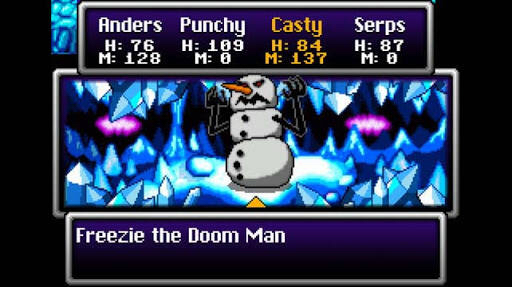
This year is probably the 3DS’s last year of dominance in the dedicated handheld market. Sales have slowed down considerably and it’s looking increasingly likely that the system will be the lowest-selling family of handheld hardware in Nintendo’s history. It’s still done fairly well for itself, particularly in light of its rough launch period, but there’s no question that the demand for dedicated handheld game systems has dropped off heavily. But you know what the great thing is? There are lots of publishers and developers still making plenty of hay on the system, even with a smaller userbase than its predecessors. Just go back and read through this article if you need proof. And though its successor will almost certainly be here at this time in 2017, there’s still an excellent year ahead for RPG lovers on the 3DS.
English versions of Dragon Quest 7, Dragon Quest 8, Monster Hunter Generations, 7th Dragon 3 Code VFD, Shin Megami Tensei 4 Apocalypse, Yo-Kai Watch 2, and the next generation of Pokemon games, Pokemon Sun and Pokemon Moon, are all scheduled for release in 2016. Japan can look forward to Monster Hunter Stories, a more traditional RPG set in the Monster Hunter universe, and Etrian Odyssey 5, the first new sequel in the series since 2012. The last big hurrah for the system will likely be Dragon Quest 11, which is coming to both the 3DS and the PlayStation 4 in the future. Coming as late as it is, I really wonder if Nintendo is going to step up and localize the 3DS version for North America and Europe, because it seems painfully unlikely Square Enix will do the job.
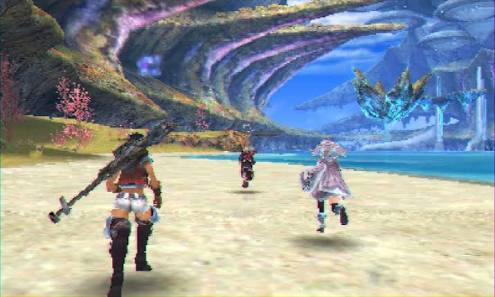
You’ll see this even more clearly in the next part of this series, but the 3DS shows that you don’t need a Nintendo DS-sized userbase to make it worth creating and selling RPGs on a platform. You just need a dedicated userbase, and something tells me that Nintendo will at least have that for as long as they want to make handheld hardware. Next month, we’ll be taking a look at the other dedicated handheld console of the last few years. It fell just as far from its predecessor as the 3DS did sales-wise, but from a shorter perch. Yet somehow, things still turned out quite fine for RPG fans, especially those with an affinity for anime or indies.
Shaun’s Five For The 3D Era
For each part of this series, I’ll be selecting five notable or interesting titles to highlight. If you’re looking to get a good cross-section of the era in question, these picks are a good place to start.
Fire Emblem: Awakening – Longtime fans may have grumbled at the lighter tone and sanded-off edges, but Fire Emblem: Awakening saved the series from being cast into the oblivion that Advance Wars, Golden Sun, and 2D Metroid games currently reside in. By putting the relationship elements more front and center, Fire Emblem: Awakening was able to draw people’s attention to one of the strong points of the series: the characters. Adding in difficulty options, including allowing players to turn off perma-death, made a series with a reputation for eating novices alive into something anyone could play. I have my criticisms of Awakening, but I still consider it a must-have for the Nintendo 3DS.
Bravely Default: Where The Fairy Flies – This is a bizarre multi-pronged response to JRPG fans past and present. On every level, Bravely Default merges the old and the new in interesting ways. You get your classic job system and turn-based battles, but with fresh mechanics like being able to borrow extra turns and end fights quickly. You get a classic story of traveling the world to restore the crystals, but with some incredibly unpredictable twists. Nothing is exactly what it seems in Bravely Default, and though you may or may not like the result of that, it’s hard to deny that it’s a shot in the arm for a genre that is often content to stagnate in its own traditions.
Pokemon X/Y – Cough. Okay, well, not every RPG needs to rip up the carpet and start fresh, right? Pokemon X/Y finally catch the series up technologically, at least to the extent that they don’t look like they would be possible on the previous generation’s hardware. The European setting is a nice change of pace for Pokemon, and if nothing else, the comfort food that is Pokemon‘s gameplay remains as appealing as ever. I’ll grant that I’m including this one as much for its visual flash as anything else, but since this is the last occasion we’ll be focusing on Nintendo in this feature, we might as well tip our hat one final time to the series that did more for handheld RPGs than any other.
Shin Megami Tensei 4 – This is not only a great, epic RPG, but it’s also a sign that the previous stigma regarding mainline RPG sequels appearing on handhelds had cleared up a bit. This feels much more like it’s following on the early installments in the series, and it can be just as nasty with its difficulty spikes. Its atmosphere is like no other, however, and there’s little out there as satisyfing as finally overcoming a Shin Megami Tensei boss that has been kicking you around for a while.
Monster Hunter 4 Ultimate – Okay, I’ve gone on the record that I don’t really consider the Monster Hunter games to be RPGs, but a lot of you do, so it’s here. Whether you consider it an RPG or not, Monster Hunter is an amazing series that gets better and better with each new installment. Aside from its quality, the series is also of vital importance in the handheld market. When Nintendo lured this franchise away from Sony, they basically killed the Vita’s chances before it even released. A rare kingmaker franchise, and one that has earned that reputation through sheer persistence.
That’s all for part ten of our on-going History Of Handheld RPGs feature. Please let me know what you think by commenting below, posting in the Official RPG Reload Club thread, or by tweeting me at @RPGReload. As for me, I’ll be back next week with a look at Banner Saga ($9.99). Thanks as always for reading!
Next Week’s Reload: Banner Saga